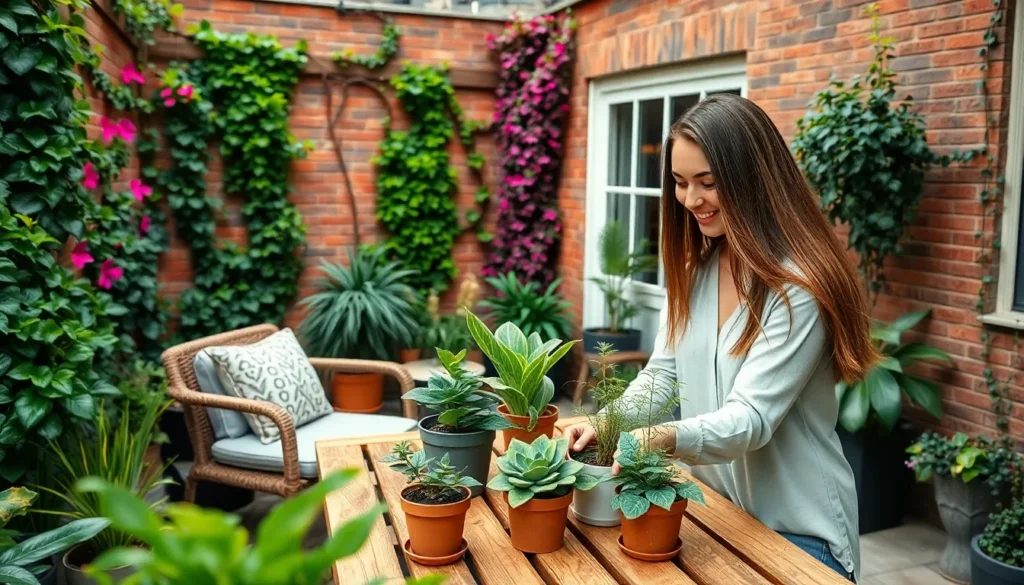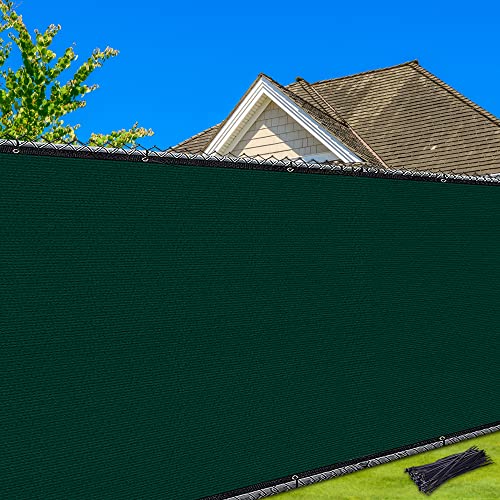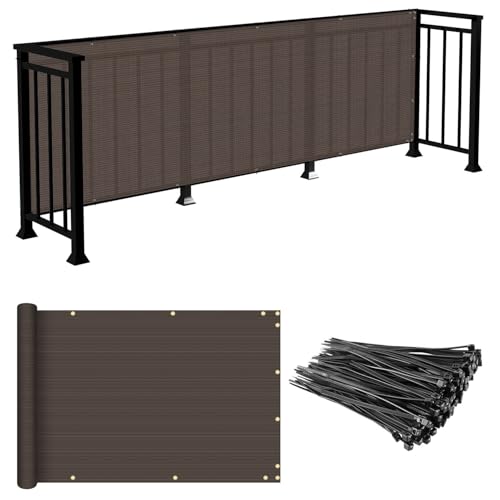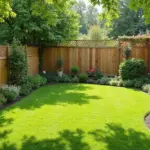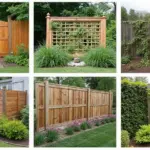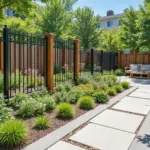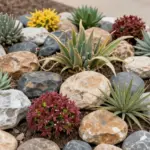We all deserve a private outdoor sanctuary where we can unwind without feeling exposed to neighbors or passersby. Small patios present unique challenges when it comes to creating that intimate retreat we’re craving. Limited square footage doesn’t mean we have to sacrifice our privacy or style.
The good news? We’ve discovered countless clever answers that’ll transform your compact outdoor space into a secluded haven. From budget-friendly DIY screens to stunning living walls these privacy ideas work beautifully in tight quarters. Whether you’re dealing with nosy neighbors overlooking apartment balconies or curious eyes from busy sidewalks we’ve got strategies that’ll give you the seclusion you need.
Creating privacy on a small patio isn’t just about blocking views – it’s about crafting an intimate atmosphere that makes your space feel larger and more inviting. Let’s explore practical answers that’ll help you reclaim your outdoor privacy without overwhelming your petite patio.
Create Privacy With Vertical Garden Walls
Vertical garden walls offer an elegant solution that combines natural beauty with effective privacy screening. We’ll explore three distinct approaches to maximize your small patio’s potential while creating a lush, private retreat.
Living Wall Systems and Vertical Planters
Modular living wall systems transform blank walls into stunning privacy barriers while maximizing growing space. We recommend pocket planters that mount directly to fences or walls, creating instant greenery without consuming valuable floor space. These systems typically hold 12-20 plants per 4-foot section, giving you dense coverage within months.
Stackable vertical planters work exceptionally well for renters since they don’t require permanent installation. Popular options include tower planters that reach 5-6 feet tall and self-watering systems that reduce maintenance time. We’ve found that combining different plant heights creates more visual interest and better privacy coverage.
Hydroponic wall systems offer year-round growing potential and faster plant establishment. These systems use nutrient-rich water instead of soil, making them lighter and easier to manage on balconies with weight restrictions. Most hydroponic walls can support herbs, leafy greens, and smaller flowering plants effectively.
Climbing Vines and Trellises
Fast-growing vines paired with attractive trellises create natural privacy screens that improve with time. We suggest Boston ivy, clematis, or honeysuckle for quick coverage that can reach 8-10 feet within two growing seasons. These vigorous climbers provide seasonal interest while blocking sight lines from neighboring spaces.
Lattice panels mounted between posts offer immediate structure while vines establish themselves. Cedar and pressure-treated pine lattices resist weather damage and support heavy vine growth effectively. We recommend spacing panels 6-8 feet apart to create natural rhythm while maintaining privacy coverage.
Wire mesh trellises provide budget-friendly support for annual vines like morning glory or sweet peas. These temporary answers work perfectly for renters or those wanting seasonal privacy changes. Tension wire systems between posts create nearly invisible support that lets vines take center stage.
Hanging Garden Screens
Suspended planters create moveable privacy barriers that adapt to changing needs throughout the day. We use ceiling-mounted tracks or heavy-duty brackets to hang multiple planters at staggered heights, creating layered screening effects. This approach works particularly well for patios with overhead structures or pergolas.
Macrame plant hangers add bohemian charm while supporting trailing plants like pothos or spider plants. These flexible screens can be repositioned easily and create gentle movement that softens harsh architectural lines. We recommend using plants with different growth habits to create varied textures and coverage levels.
Bamboo screens with integrated planter boxes offer structured privacy with natural materials. These portable units typically measure 4-6 feet tall and can be linked together to create continuous barriers. The integrated planters support smaller plants or herbs, making them functional and attractive privacy answers.
Install Outdoor Privacy Screens and Panels
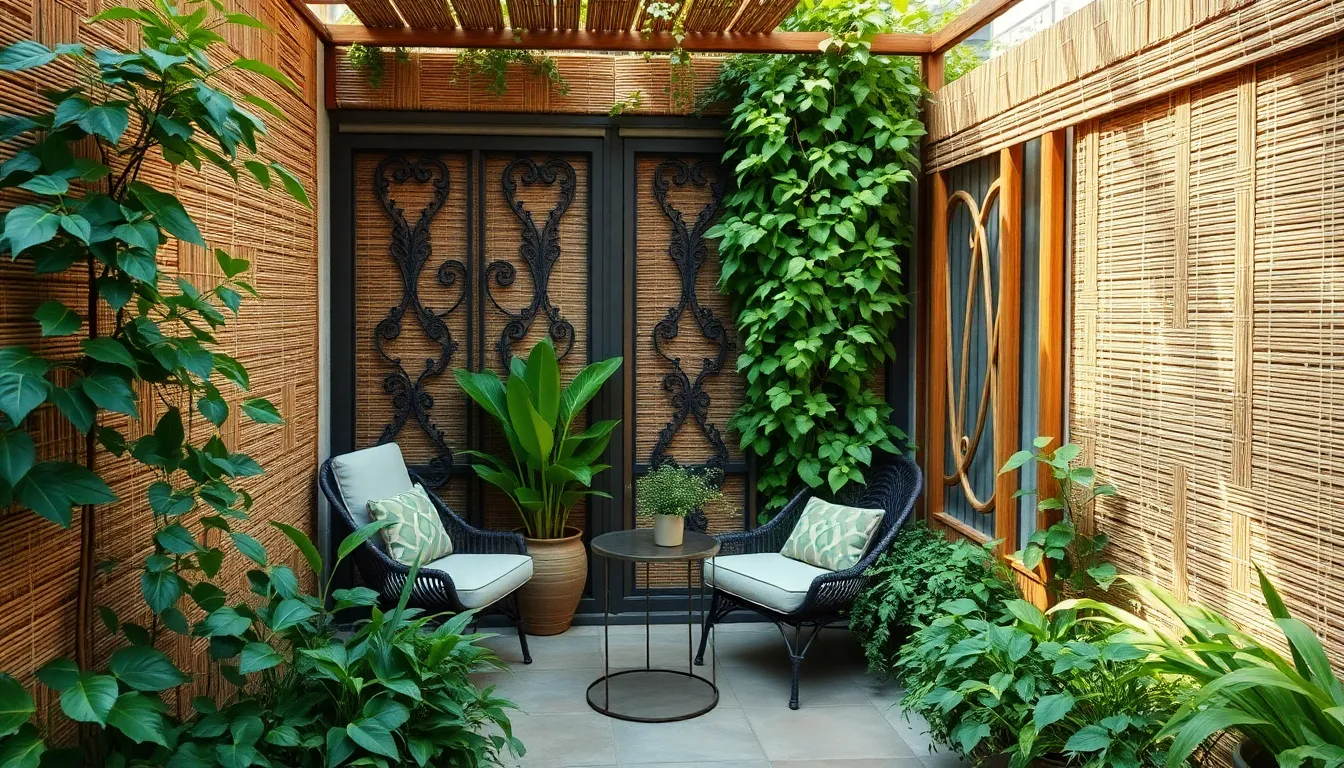
Privacy screens and panels offer instant transformation for any compact outdoor space. We’ll explore three versatile screening answers that balance functionality with visual appeal.
Bamboo and Reed Screening Options
Bamboo screens create natural barriers that perfectly complement small patio designs. These lightweight materials attach easily to existing fences or frames, providing dense coverage while allowing filtered light to pass through. We recommend bamboo panels for their eco-friendly properties and tropical aesthetic that pairs beautifully with garden plants.
Reed screening delivers rustic charm at an affordable price point. These natural materials work exceptionally well as temporary privacy answers or decorative accents. While reed screens offer less durability for permanent outdoor installations, they excel in creating cozy atmosphere for seasonal patio use.
Both options blend seamlessly with climbing plants and garden elements. Natural screening materials like bamboo and reed enhance the outdoor ambiance rather than dominating the visual industry.
Metal and Wood Decorative Panels
Metal privacy panels featuring laser cut patterns serve dual purposes as functional screens and artistic focal points. These durable answers allow light and air circulation while maintaining visual separation from neighboring spaces. We often see intricate designs that create beautiful shadow patterns throughout the day.
Wood panel systems bring warmth and natural texture to compact patios. Slatted or latticed designs offer customizable privacy levels while maintaining an open feel. These panels accept paint or stain treatments, making them adaptable to any design theme or color scheme.
Decorative panels work exceptionally well when combined with climbing plants for living privacy walls. The structured framework supports plant growth while providing immediate screening benefits.
Retractable Privacy Screen Answers
Retractable systems maximize flexibility for changing privacy needs throughout the day. These versatile screens pull down or across when seclusion is desired, then retract completely for open entertaining. Weather resistant fabric options withstand outdoor conditions while offering easy operation.
Roller screens and outdoor curtain tracks provide space efficient answers for tight quarters. We find these systems particularly valuable for patios that serve multiple functions throughout different times. Bamboo roll screens offer natural aesthetics with retractable convenience.
Retractable privacy screens adapt to varying weather conditions and social situations. Their easy installation and operation make them practical choices for renters or anyone seeking flexible outdoor privacy answers.
Build Strategic Fencing Solutions
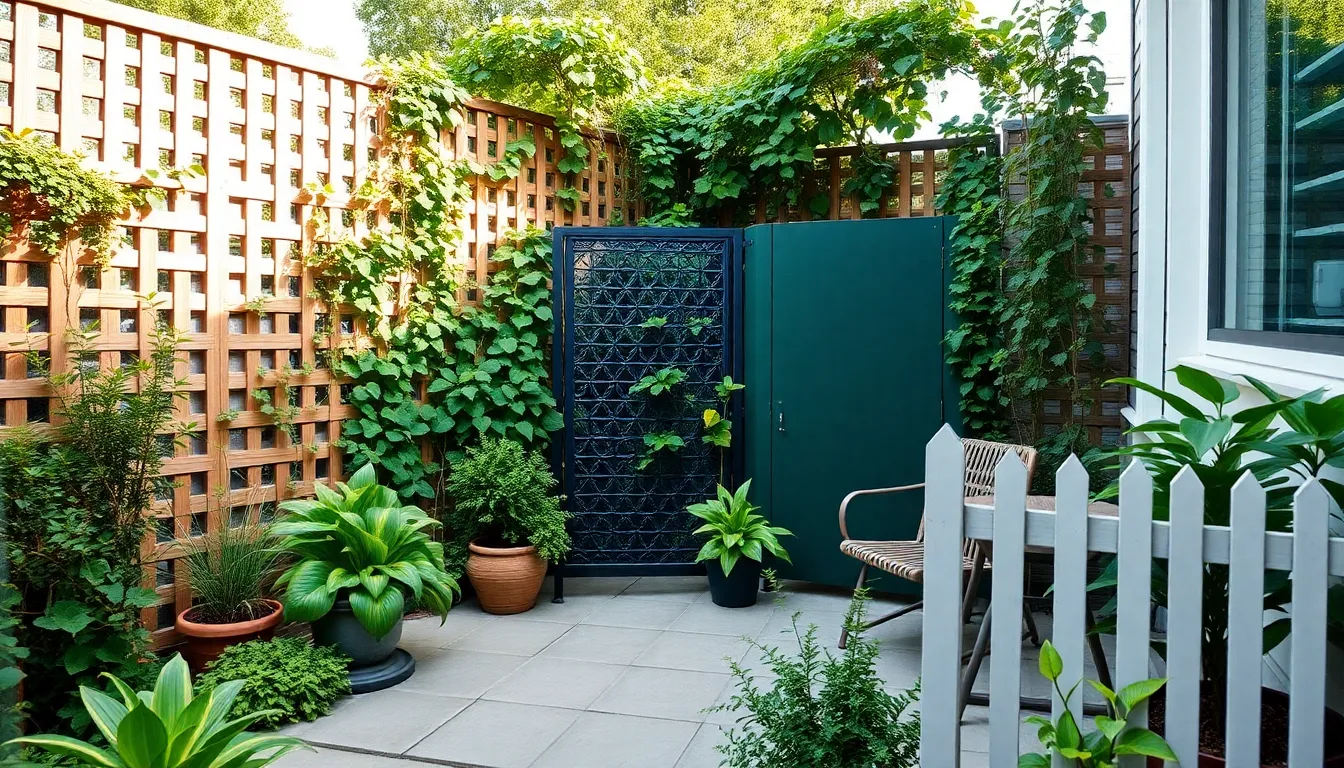
Strategic fencing combines functionality with design appeal to create effective privacy without overwhelming your compact outdoor space. We’ve found that pairing fences with complementary elements like pergolas or trellises softens harsh lines while maximizing privacy benefits.
Compact Fence Designs for Small Spaces
Compact fencing answers maximize privacy impact while preserving precious floor space in tight patio areas. Partial fencing paired with strategic plantings creates layered privacy barriers that maintain airflow and natural light circulation. We recommend low height fences topped with climbing plants to achieve vertical privacy without creating a boxed in feeling.
Freestanding privacy screens offer exceptional flexibility for small patios since they don’t require permanent installation. Moving these panels allows you to adjust privacy levels throughout the day or seasons. Open slat designs work particularly well because they provide screening from direct views while allowing ventilation to flow freely through your space.
Folding panels serve dual purposes as privacy barriers and space dividers when entertaining guests. These portable answers work perfectly for renters who can’t make permanent structural changes to their outdoor areas.
Lattice and Picket Fence Alternatives
Lattice fencing creates semi private environments by filtering light and air while screening unwanted views from neighboring properties. These open designs prevent small patios from feeling completely enclosed while still providing meaningful privacy benefits. Climbing vines transform basic lattice panels into lush green walls that enhance both privacy and aesthetic appeal.
Picket fences offer decorative charm rather than complete privacy but become highly effective when paired with tall plantings. We suggest combining picket designs with ornamental grasses or flowering shrubs to create charming boundaries that define your patio space. These fences work especially well for front facing patios where you want to maintain neighborhood friendliness while establishing clear property lines.
Mixed material approaches using painted brick bases topped with wood fencing add visual interest while increasing overall height. This combination provides solid privacy at eye level while maintaining design sophistication that complements various architectural styles.
Corner and Partial Fencing Strategies
Corner focused fencing targets exact sightlines from neighboring properties while keeping your patio feeling open and inviting. Partial barriers block problematic views without creating complete enclosure that might feel claustrophobic in small spaces. We often combine these strategic placements with outdoor curtains for flexible privacy that adapts to different occasions.
Staggered plantings mixed with selective fencing create natural looking privacy answers that feel organic rather than fortress like. Bamboo screens integrated with hedge plantings provide excellent coverage while maintaining an inviting atmosphere for both residents and guests.
Strategic placement becomes crucial when working with corner patios since full perimeter fencing often overwhelms these intimate spaces. Targeting the most intrusive sightlines with focused barriers allows you to maintain openness in other directions while achieving necessary privacy where it matters most.
Utilize Natural Privacy Elements

Natural privacy elements transform small patios into secluded retreats while maintaining an organic aesthetic. We’ll explore how living screens create beautiful barriers that enhance your outdoor space’s ambiance.
Fast-Growing Shrubs and Hedges
Fast-growing shrubs create the foundation of effective natural privacy screening on small patios. Evergreen varieties like arborvitae, privet, and boxwood establish dense barriers within 2-3 growing seasons while maintaining year-round coverage. Dense plantings of these shrubs block unwanted views completely while softening harsh architectural lines around your patio perimeter.
Strategic placement along property lines maximizes privacy impact without overwhelming limited floor space. We recommend spacing shrubs 3-4 feet apart to allow for natural spreading while ensuring complete coverage as they mature. Compact varieties like dwarf Alberta spruce or Japanese holly work exceptionally well in tight quarters, reaching 4-6 feet in height without extensive lateral growth.
Regular pruning shapes these natural screens to fit your patio’s exact dimensions perfectly. Seasonal maintenance keeps hedges thick and uniform, preventing gaps that compromise privacy effectiveness.
Ornamental Grasses for Screening
Ornamental grasses provide flexible screening answers that add texture and movement to small patio privacy designs. Tall varieties like pampas grass, fountain grass, and feather reed grass create effective visual barriers reaching 6-8 feet in height. Planted grasses sway gracefully in breezes, creating ever-changing natural screens that feel less rigid than traditional fencing.
Border plantings of ornamental grasses establish privacy zones without consuming valuable patio square footage. We suggest grouping different grass heights together for layered screening that blocks views at multiple levels. Containerized grass plantings offer even greater flexibility, allowing seasonal rearrangement of your privacy layout.
Maintenance requirements remain minimal compared to traditional shrubs, making grasses ideal for busy homeowners seeking low-effort privacy answers. Seasonal cutting refreshes growth patterns while maintaining optimal screening density throughout growing seasons.
Container Plants as Privacy Barriers
Container plants revolutionize small patio privacy by offering completely customizable screening arrangements. Large planters filled with tall shrubs, bamboo, or ornamental trees create instant privacy barriers that we can relocate as needed. Strategic positioning around seating areas targets exact sightlines without blocking beneficial views or natural light.
Movable privacy containers adapt to changing seasonal needs and entertaining requirements throughout the year. We recommend using wheeled planters for larger specimens, making repositioning effortless when hosting gatherings or performing maintenance. Tiered container arrangements maximize vertical screening while minimizing floor space consumption.
Plant selection flexibility allows seasonal refreshing of your privacy design aesthetic. Evergreen containers provide consistent year-round screening, while deciduous options offer changing seasonal interest with spring flowers, summer foliage, and autumn colors. Mixed container groupings combine different heights and textures for complex natural barriers that enhance overall patio ambiance.
Design With Outdoor Curtains and Drapes
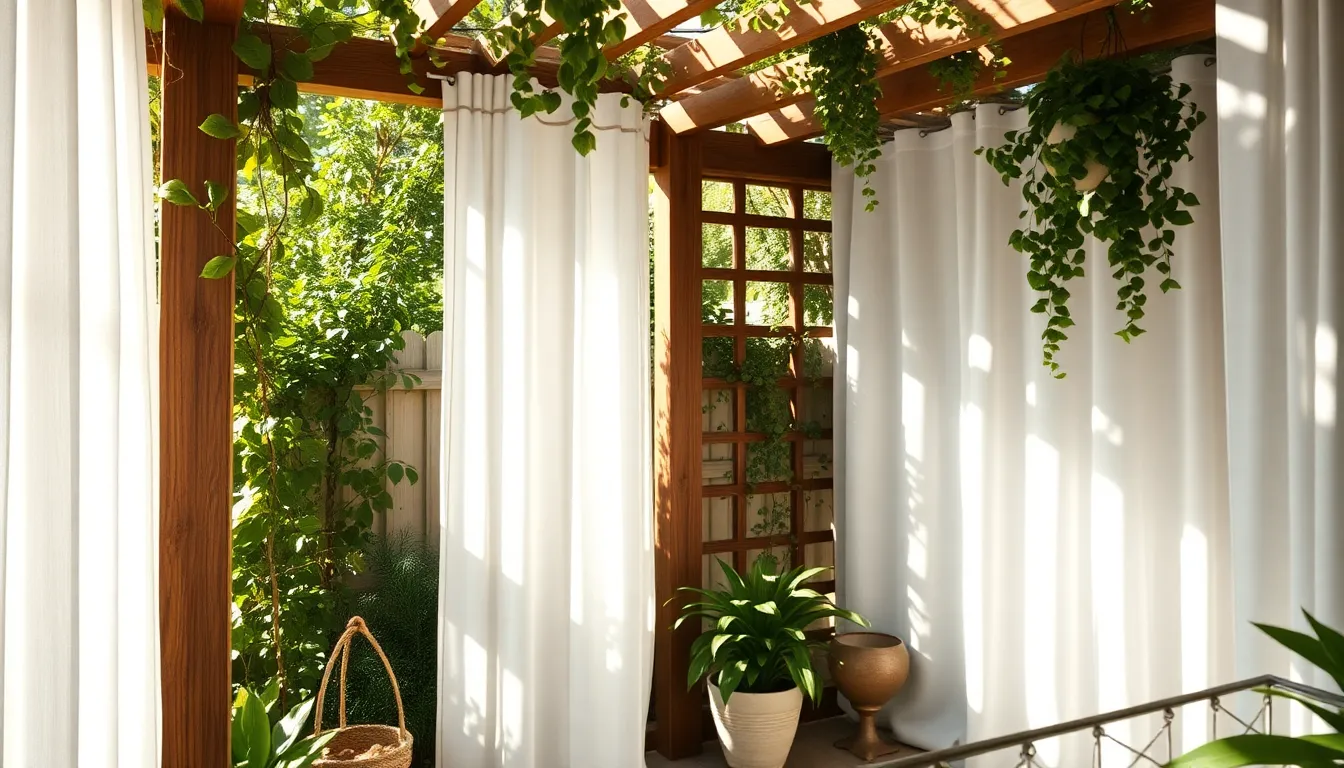
Moving beyond natural barriers and screens, outdoor curtains offer a sophisticated approach to patio privacy that combines flexibility with style. We can create an intimate outdoor room by strategically hanging fabric panels that adapt to our changing privacy needs throughout the day.
Weather-Resistant Fabric Options
Solution-dyed acrylics stand out as our top choice for outdoor curtain fabrics because they resist fading and maintain vibrant colors even though constant sun exposure. These materials withstand harsh weather conditions while providing the breathability we need to maintain comfortable airflow around our patio space.
Polyester blends deliver exceptional durability for outdoor applications, offering resistance to mildew and water damage that extends the life of our privacy investment. Outdoor-exact textiles combine weather resistance with aesthetic appeal, ensuring our curtains look fresh season after season.
Light-colored fabrics serve a dual purpose by reflecting sunlight to keep our patio cooler while providing the visual barrier we desire. We should prioritize materials that balance opacity for privacy with enough breathability to prevent our enclosed space from feeling stuffy or overheated.
Curtain Rod and Hardware Installation
Steel and aluminum rods with powder-coated finishes provide the corrosion resistance essential for long-term outdoor use. We need hardware that can withstand wind gusts without compromising the stability of our privacy system.
Mounting brackets can attach to existing patio structures like pergolas or covered areas, eliminating the need for additional construction. Wall and ceiling installations offer permanent answers when we have suitable mounting surfaces available.
Tension rods work well for temporary installations or rental situations where drilling isn’t permitted, though permanent fixtures provide superior wind resistance. We should ensure all mounting points are securely anchored to prevent our curtains from becoming damaged during storms.
Layered Curtain Privacy Systems
Combining outdoor curtains with other privacy elements creates ever-changing screening that adapts to seasonal changes and varying light conditions. We can pair fabric panels with climbing plants on trellises to achieve both immediate coverage and long-term natural screening.
Partial wood screens complement curtain systems by providing structural backbone while the fabric adds softness and flexibility to our privacy design. This approach allows us to control both light penetration and airflow based on daily activities and weather conditions.
Multiple privacy layers give us the freedom to adjust our outdoor sanctuary throughout the day, opening curtains for entertaining while maintaining strategic screening from neighboring properties. We achieve natural texture variation by mixing hard materials like screens with soft fabric elements that move gently with the breeze.
Create Multi-Level Privacy Zones
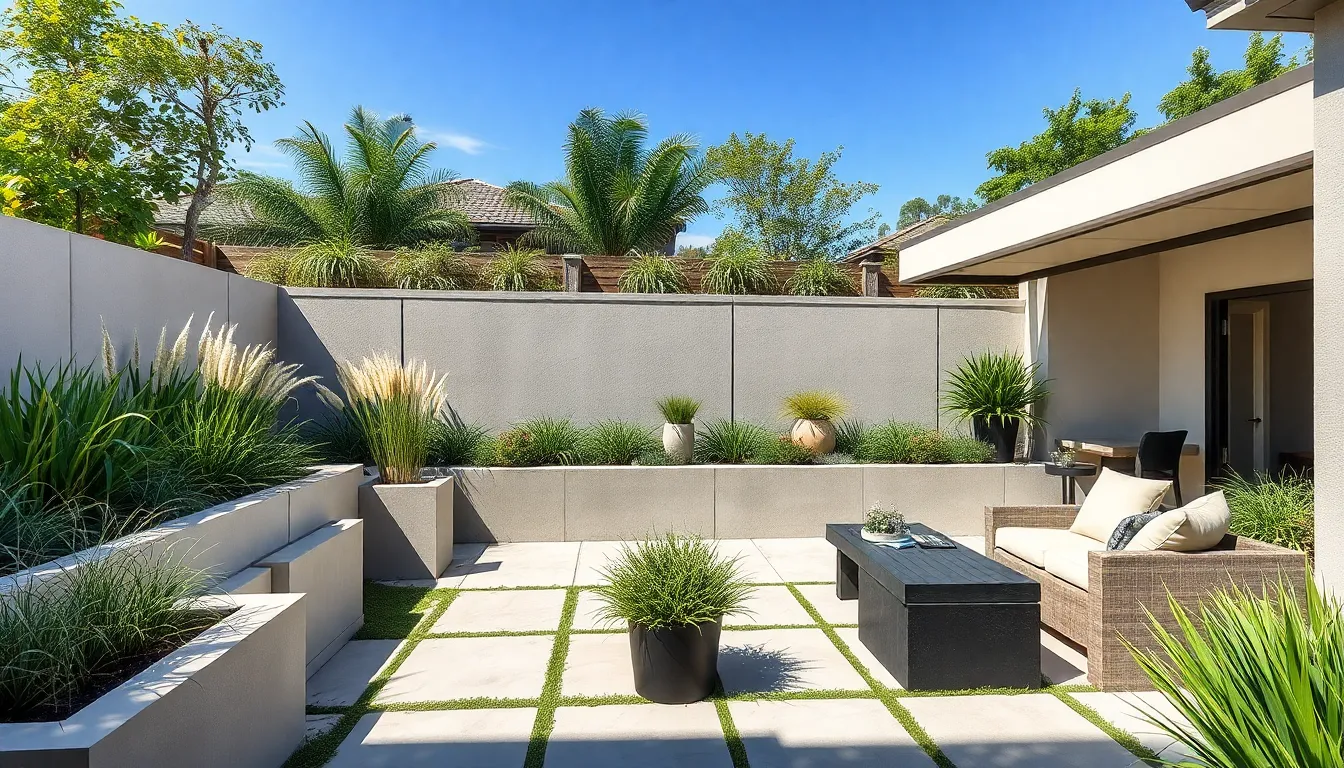
Multi-level privacy zones transform small patios into sophisticated outdoor retreats by strategically layering screening elements at different heights. We’ll create depth and visual interest while maximizing privacy through three distinct elevation approaches.
Raised Planter Box Barriers
Raised planter box barriers serve as living privacy screens that combine functionality with natural beauty. We position these elevated containers at strategic heights around our patio’s perimeter, typically 24-36 inches tall, to block sight lines without creating an enclosed feeling. Ornamental grasses like fountain grass or bamboo varieties work exceptionally well in these planters, providing dense screening while adding texture and movement to our outdoor space.
Staggered planter arrangements create more ever-changing visual barriers than straight lines. We can vary the heights by using planters of different elevations, with some at 18 inches and others at 30 inches, to establish a natural flowing privacy screen. Fast-growing shrubs such as boxwood or small evergreens in raised planters offer year-round screening that increases in effectiveness over time.
The mobility of raised planters allows us to adjust our privacy zones based on seasonal needs or changing sight lines. Container gardening in elevated planters also provides better drainage and soil control, making it easier to maintain healthy screening plants in our small patio environment.
Tiered Seating With Built-In Privacy
Tiered seating with built-in privacy creates intimate conversation areas while incorporating screening elements directly into our furniture design. We design these multi-level seating arrangements with high backs, integrated side panels, or planter walls that provide natural barriers around seating zones. Built-in bench seating with 42-48 inch high backs effectively blocks views from neighboring windows while creating cozy gathering spots.
Corner seating arrangements with integrated privacy walls work particularly well in small patios, utilizing space efficiently while providing maximum screening. We can incorporate planter boxes directly into bench designs, creating living privacy screens that grow upward behind our seating areas. These integrated planters work perfectly with climbing vines or tall ornamental grasses that provide additional vertical screening.
Multi-level seating platforms create distinct zones within our patio space, with lower lounging areas and higher dining spaces that naturally provide varying degrees of privacy. Each tier can include its own privacy elements, such as built-in planters or decorative screens, that complement the overall design while serving exact screening needs.
Split-Level Patio Design Ideas
Split-level patio designs use elevation changes to create natural privacy zones that feel spacious even though limited square footage. We establish different floor heights through raised platforms, sunken seating areas, or stepped transitions that visually separate our patio from neighboring properties. A raised dining area positioned 12-18 inches above the main patio level provides better sight line control while creating architectural interest.
Retaining walls between different patio levels serve dual purposes as structural elements and privacy barriers. We can design these walls at 30-36 inches high to provide seating while blocking ground-level views from adjacent yards. Integrated planters on top of retaining walls add another layer of privacy screening while softening the hardscape elements.
Sunken conversation areas create intimate gathering spaces that naturally provide privacy through their lowered position. We surround these areas with raised planters or low walls that enhance the sense of enclosure while maintaining good drainage and accessibility. These design elements work together to create distinct outdoor rooms within our small patio space.
Incorporate Privacy-Enhancing Furniture
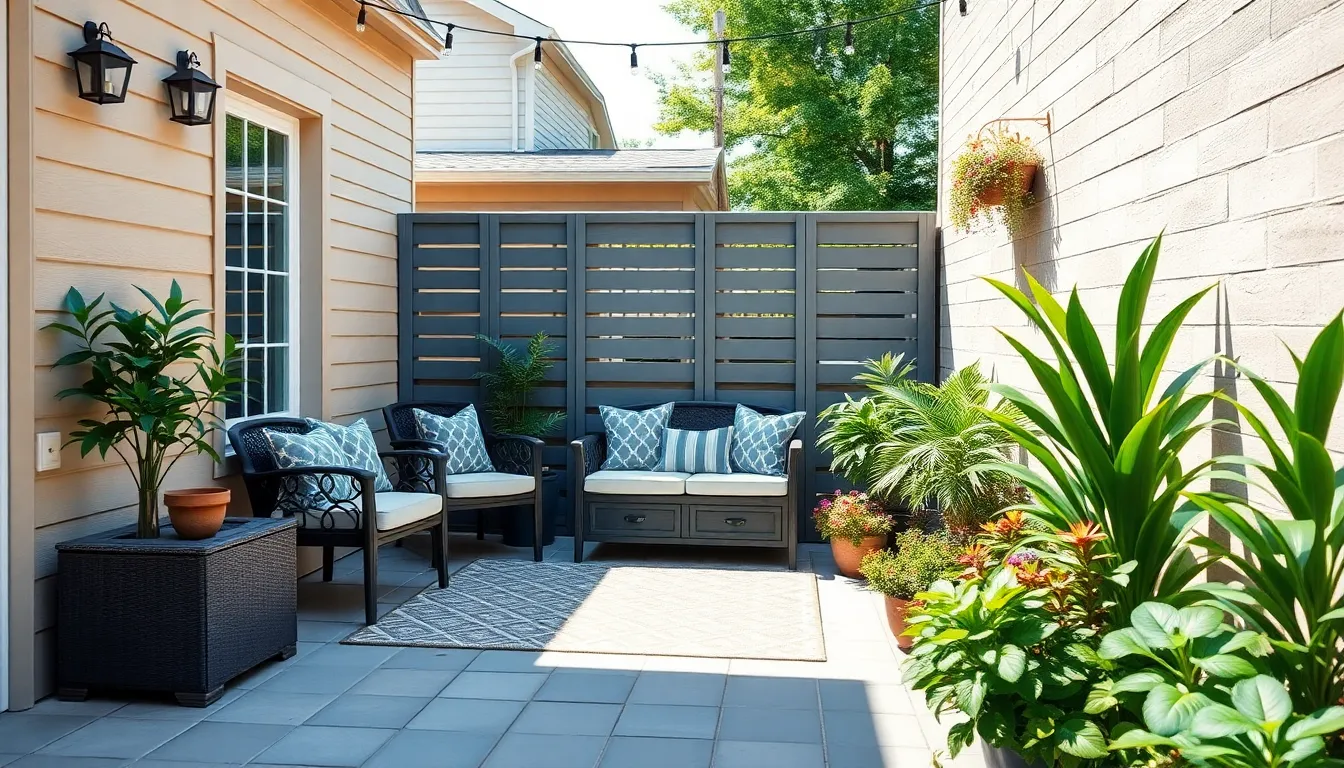
Strategic furniture placement transforms small patios into private retreats without sacrificing valuable floor space. We’ll show you how exact furniture pieces can create natural barriers while maintaining functionality and style.
Outdoor Room Dividers and Bookcases
Outdoor bookcases serve dual purposes by organizing your patio essentials while blocking unwanted views from neighbors. Weather resistant shelving units made from teak or powder coated metal create vertical privacy barriers that don’t overwhelm small spaces. Position these dividers perpendicular to seating areas to establish intimate conversation zones.
Modular room divider systems offer flexibility for changing privacy needs throughout seasons. Stackable shelving components allow you to adjust height and configuration based on your current requirements. Fill open shelves with potted plants, outdoor decor, or weather proof storage baskets to enhance the screening effect.
Freestanding bookcase dividers work particularly well in rental situations where permanent installations aren’t possible. These portable answers can be moved to different locations as your privacy needs change. Choose units with slatted backs to maintain airflow while still providing visual separation.
High-Back Seating Arrangements
High back outdoor furniture creates natural privacy screens around your seating area without requiring additional space. Sectional sofas with tall backs shield conversations from neighboring patios while providing comfortable gathering spots. We recommend choosing pieces with backs measuring at least 36 inches to achieve effective visual blocking.
Wingback patio chairs offer intimate seating options that cocoon users in privacy. These statement pieces work especially well in corner arrangements where they can maximize the screening effect. Position multiple wingback chairs to create a semi circle that naturally blocks sight lines from multiple directions.
Banquette style seating with high backs transforms patio perimeters into private dining areas. Built in bench seating along fence lines or walls creates continuous barriers while maximizing seating capacity. Add weather resistant cushions and pillows to enhance comfort without compromising the privacy benefits.
Storage Benches as Privacy Elements
Storage benches function as multipurpose privacy barriers that organize patio essentials while blocking lower sight lines. Position these pieces strategically along patio edges to create visual separation from ground level views. Choose benches with heights between 18 to 24 inches for optimal screening and comfortable seating.
Weatherproof storage benches protect outdoor cushions, garden tools, and seasonal decor while serving as impromptu seating. Models with lift up lids provide easy access to stored items without disrupting the privacy barrier. We suggest selecting benches with drainage features to prevent water accumulation during rainy seasons.
Modular storage bench systems allow you to create custom length barriers by connecting multiple units. These flexible arrangements adapt to different patio layouts and can be reconfigured as your needs change. Corner bench configurations maximize privacy coverage while utilizing often overlooked patio areas effectively.
Add Overhead Privacy Features
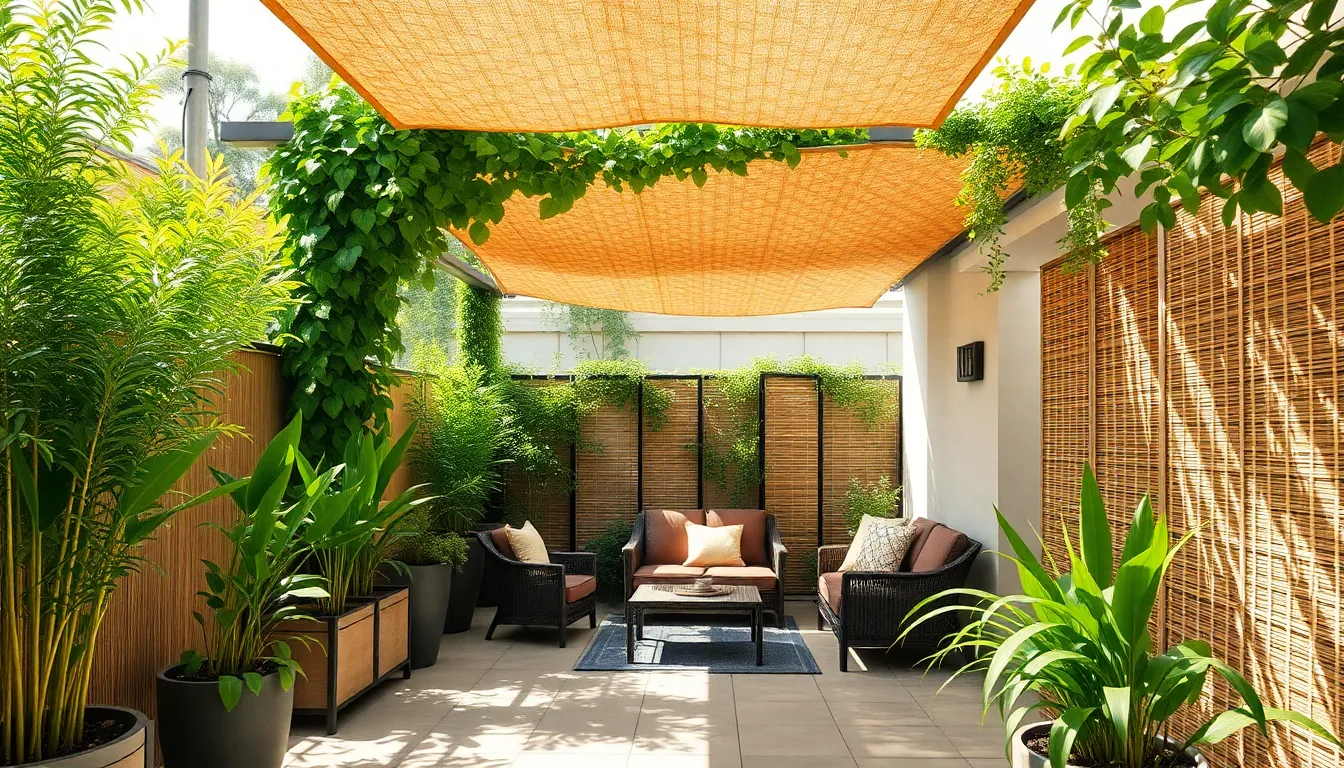
Moving beyond ground-level answers, we can transform our small patio’s privacy by looking upward. Overhead structures create intimate spaces while filtering unwanted views from neighboring upper floors and adjacent buildings.
Pergola and Gazebo Installations
Pergolas offer versatile framework answers that combine style with practical privacy coverage. We can customize these structures with lattice roofs or climbing plants like ivy to develop natural screening that grows more effective over time. Matching pergolas with privacy fencing or trellises enhances the enclosed feeling without blocking natural light completely.
Installing a gazebo provides more substantial overhead protection with solid roofs or integrated screens that deliver comprehensive weather protection. These structures add important architectural interest to small patios while offering customizable privacy options through curtains or retractable screens. We’ll find gazebos particularly effective for creating defined outdoor rooms that feel separate from surrounding areas.
Both pergola and gazebo options work exceptionally well when we combine them with vertical privacy elements like tall planters or bamboo screens. This layered approach maximizes privacy coverage while maintaining the airflow and natural lighting that keeps small spaces feeling open and inviting.
Shade Sails and Canopy Systems
Shade sails deliver modern privacy answers through tensioned fabric panels that block views from taller neighbors while preserving excellent airflow underneath. These lightweight installations adapt perfectly to small spaces where permanent structures might overwhelm the available area or violate rental restrictions.
Canopy systems provide flexible coverage options with both fixed and retractable fabric designs that give us control over sunlight exposure and privacy levels throughout the day. We can adjust these systems based on changing weather conditions or social activities, making them ideal for multi-functional patio spaces.
Fixed canopy installations offer permanent answers that require minimal maintenance once properly installed, while retractable versions give us the flexibility to open up our space when privacy isn’t needed. Both options work effectively in small patios where traditional overhead structures might feel too imposing or permanent.
Umbrella and Awning Answers
Large patio umbrellas create instant privacy zones with portable, affordable options that work perfectly in space-constrained areas. We can position umbrellas with high sides or adjustable tilts to block exact sightlines while maintaining the flexibility to move them as needed for different activities or seasonal changes.
Retractable awnings extend privacy coverage from building walls to provide horizontal protection that shields us from both sun exposure and eye-level views from neighboring properties. These installations come in many sizes and styles, allowing us to match our patio’s aesthetic while delivering practical privacy benefits.
Fixed awning installations offer permanent overhead answers that work particularly well for small patios adjacent to building walls, providing consistent coverage without taking up valuable floor space. We can combine awnings with outdoor curtains or side panels for enhanced privacy that adapts to changing needs throughout the day.
Maximize Corner and Edge Privacy
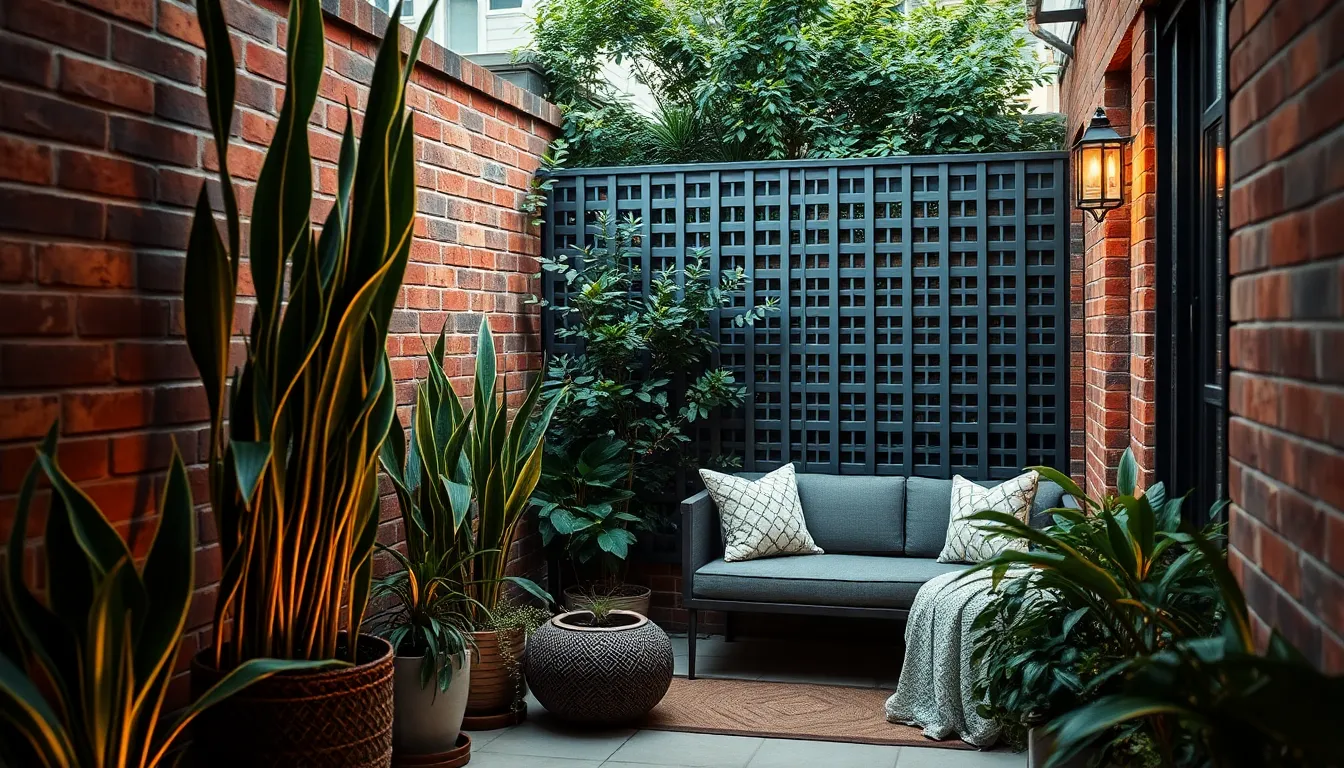
Corner and edge areas of small patios offer the greatest opportunities for creating privacy without sacrificing precious floor space. These strategic zones allow us to establish natural boundaries that transform open areas into intimate outdoor retreats.
Corner Privacy Nook Designs
Create cozy seating areas by enclosing corners with screens, tall plants, or pergolas that filter light and establish intimate boundaries. We can combine matching pergolas with privacy fences to create a cohesive look that makes corner nooks feel secluded and inviting.
Add decorative screens in corners to provide both style and function while blocking unwanted views. These eye-catching designs transform awkward corner spaces into private retreats that serve as focal points for the entire patio area.
Install corner planters with tall shrubs or ornamental grasses to create natural privacy barriers that soften harsh angles. Strategic placement of these living elements helps define separate outdoor rooms while maintaining visual flow throughout the space.
Edge Screening Techniques
Build DIY outdoor privacy screens using wood, metal, or fabric materials for flexible edge screening that can be customized to fit available space. Freestanding screens offer the advantage of being movable and easily adjusted as privacy needs change throughout the seasons.
Use shade sails stretched over or near patio edges to add visual cover and create a sense of enclosure while providing beneficial shade. These modern answers work particularly well for blocking views from taller neighboring structures without completely closing off the space.
Place container plantings with tall grasses or shrubs along patio edges to create movable green screens that enhance aesthetics while blocking visibility. Container gardens allow us to experiment with different heights and textures until we achieve the perfect privacy balance.
Extend existing fence height with wood slats or lattice tops to enhance privacy without requiring heavy construction or major renovations. This cost effective approach works especially well for rental properties where permanent modifications aren’t possible.
Strategic Placement of Privacy Elements
Layer multiple elements such as tall plants, trellis walls, and screens to create depth in privacy coverage while adding visual interest to small patio spaces. This technique prevents the area from feeling cramped while ensuring comprehensive privacy from multiple sight lines.
Match structures and materials across fences, pergolas, and screening elements to create a cohesive look that visually encloses the patio without overwhelming the space. Coordinated design elements make small patios appear larger and more professionally designed.
Install outdoor curtains and blinds on pergolas or existing structures to allow control over privacy and sunlight throughout the day. These adaptable answers let us adjust the patio atmosphere based on activities, weather conditions, and seasonal changes.
Position tall hedges and trees in corners or along edges to create natural barriers that block sight lines while adding beneficial greenery. Plants like arborvitae and boxwood can create dense privacy screens within just a few growing seasons when properly positioned.
Conclusion
Transforming your small patio into a private oasis doesn’t require sacrificing style or very costly. We’ve explored countless creative answers that prove limited square footage can still deliver maximum privacy and comfort.
The key lies in thinking vertically and strategically layering different elements. Whether you choose living walls with lush greenery or sleek retractable screens, each approach offers unique benefits that can be customized to your exact needs and aesthetic preferences.
Remember that the most effective privacy answers often combine multiple elements – perhaps tall corner plantings with overhead shade structures, or decorative panels paired with strategic furniture placement. This layered approach creates depth and visual interest while ensuring comprehensive coverage.
Your small patio has incredible potential to become the private retreat you’ve been dreaming of. Start with one or two answers that speak to you, and gradually build your perfect outdoor sanctuary.
Frequently Asked Questions
What are the best privacy solutions for small patios?
The most effective privacy solutions for small patios include vertical garden walls, outdoor privacy screens, strategic fencing, and natural plantings. Modular living wall systems maximize growing space without taking up floor area, while bamboo screens and climbing vines create natural barriers. These solutions work together to transform compact spaces into private retreats while maintaining aesthetic appeal.
How can I create privacy without losing floor space on my patio?
Focus on vertical solutions like wall-mounted planters, hanging screens, and tall privacy panels. Use climbing vines on trellises, retractable screens, and high-back furniture arrangements. Strategic furniture placement, such as outdoor bookcases and storage benches, can create privacy barriers while serving multiple functions without consuming valuable floor space.
What plants work best for small patio privacy screening?
Fast-growing options include arborvitae, boxwood, ornamental grasses, and climbing vines. These plants create dense barriers within a few growing seasons. Container plantings offer flexibility for rearrangement, while vertical gardens maximize screening potential. Choose plants that suit your climate and maintenance preferences for long-lasting privacy solutions.
Are outdoor curtains effective for patio privacy?
Yes, outdoor curtains are highly effective and versatile privacy solutions. Weather-resistant fabrics like solution-dyed acrylics maintain appearance despite outdoor conditions. Curtains offer flexibility to adjust privacy levels throughout the day and can be combined with other screening elements. They’re particularly useful for renters or those wanting adaptable privacy options.
How do I create privacy from upper-level neighbors?
Install overhead structures like pergolas, gazebos, or shade sails to block views from above. Large patio umbrellas and retractable awnings provide portable solutions. Climbing plants on overhead trellises create natural screening while maintaining airflow. These solutions ensure privacy while preserving the open feel of your outdoor space.
What’s the most budget-friendly way to add patio privacy?
DIY bamboo or reed screens are cost-effective options that create instant privacy. Fast-growing climbing plants paired with simple trellises offer natural, affordable screening. Outdoor curtains and strategic container plantings provide flexible, budget-friendly solutions. These approaches deliver effective privacy without significant investment while maintaining style and functionality.
Can I create privacy zones on a very small patio?
Absolutely! Use multi-level design elements like raised planters and tiered seating to create distinct zones. Corner enclosures with screens or plants maximize privacy in compact areas. Modular furniture and retractable screens allow flexible space division. Strategic placement of privacy elements creates intimate areas without overwhelming the limited space.
How do I maintain privacy while keeping my patio feeling open?
Use partial screening rather than complete enclosure, combining solid barriers with open elements like lattice panels. Layer different privacy solutions at varying heights to create depth. Choose materials that filter rather than block completely, such as ornamental grasses or semi-transparent screens, maintaining airflow and light penetration.

